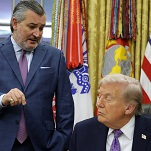Each week, Big Issues focuses on a newly released comic-book issue of significance. This week, it’s Howtoons: (Re)ignition #2. Written by Fred Van Lente (Archer And Armstrong, Magnus: Robot Fighter) with art by Tom Fowler (Quantum And Woody, Green Arrow) and colorist Jordie Bellaire (Moon Knight, Zero), it creates an interactive all-ages reading experience by combining DIY instructional guides with an engaging narrative and vivid artwork.
When you have the right teacher, learning can be a lot of fun. An enthusiastic educator that knows how to turn lessons into adventures is invaluable in a world where knowledge is so accessible that it doesn’t need to be stored mentally, and Howtoons: (Re)ignition uses the opportunities of the comic-book medium to teach an incredibly captivating science class.
Conceived by scientists Joost Bonsen and Dr. Saul Griffith with artist Nick Dragotta and toy designer Ingrid Dragotta, Howtoons began as a series of instructional webcomics teaching kids how to make a wide variety of items ranging from pinwheels to soda bottle submarines to turkey baster flutes. This past July, Image Comics celebrated the project’s 10th anniversary by collecting those webcomics in Howtoons: Tools Of Mass Construction, a slick 350-page package that is an outstanding value at $17.99. (That’s the price of six single issues for about three times the page count.)
Dragotta is one of the industry’s most exciting artists—his work on this week’s East Of West #15 is breathtaking in its scope and intensity—and his vibrant imagination turns instructional guides into engaging exercises in visually conveying information. With their understanding of sequential storytelling, comic-book artists are the perfect people to illustrate instructions, using their knowledge of perspective and staging to add character to the process without sacrificing clarity. Siblings Celine and Tucker play an essential part in both of those aspects, bringing personality to the page through their interactions while providing clarity by serving as a visual examples of what the instructions look like in action.
That initial Howtoons collection teaches a lot of the fundamentals, giving readers a basic understanding of various scientific principles as well as the handling of tools and materials. Those lessons come in handy for Howtoons: (Re)ignition, the new monthly Image series that introduces more ambitious science projects along with an overarching narrative for Celine and Tucker.
In the new series, the two siblings find themselves alone on an Earth that has been dramatically altered by the workings of profit-hungry energy corporations, and must use their scientific know-how and engineering savvy to make their way across wild terrain in hopes of finding their lost parents. The first issue had the pair making one of Howtoons’ most popular inventions—the marshmallow shooter—before walking readers through making a toilet paper roll flashlight, and this week’s Howtoons: (Re)ignition #2 features the series’ most daunting creation to date: a wooden go-kart.
The Howtoons creators make it very clear that they assume no responsibility for any injuries suffered or damages incurred as a result of these projects, and the go-kart is a rarity in that it explicitly states that adult supervision is required. The comic might show Celine and Tucker speeding through an urban jungle on their go-kart, but that’s just so kids have a mental image that gets them excited to actually create the vehicle. The comic is very explicit about making sure the actual go-kart isn’t used in the same manner, and while the final product may not have the kind of mobility as what’s on the page, the value of the project isn’t in the driving, but the construction. Kids get a toy to play with after completing a “Howtoon,” but more importanly, they gain practical skills and a sense of self-reliance.
Howtoons: (Re)ignition is definitely targeted to younger readers, but it has true all-ages appeal thanks to the quality of the creative team. The series is very Pixar-esque, with an environmentally conscious plot, lush visual spectacle, and a script that balances interpersonal drama and humor. Writer Fred Van Lente has a talent for breaking down complex ideas in an entertaining manner (see: his Action Philosophers series with Ryan Dunlavey) and he makes sure to keep a steady flow of fun underneath the educational portions of the narrative.
Artist Tom Fowler, colorist Jordie Bellaire, and letterer Rus Wooton all play essential roles in conveying information with impact and clarity. Fowler creates expressive characters and sprawling environments that pull the reader into Celine and Tucker’s shoes, and Bellaire’s rich color palette creates an even more immersive setting with waves of inviting greens. The images of the city overgrown with foliage have the same unsettling beauty as some of the locations in the video game The Last Of Us, creating an eerily empty atmosphere that is still full of gorgeous natural detail.
Wooton’s lettering uses size and color to draw attention to key parts of the hefty text, and also adds visual variation to spice up the overall page design. For the go-kart’s supervision warning, he places white and yellow text over a black background to emphasize its importance, and the red background of the caption for Tucker’s “Really, Really Terrible Shelter” accentuates that the boy’s approach is wrong.
Even if you have no interest in the construction elements, Howtoons: (Re)ignition is a worthwhile read for the intellectual stimulation and striking visuals. TV shows like Cosmos prove that there’s an audience that wants to be educated while being entertained, and Howtoons: (Re)ignition is one of the few comics that does exactly that. There are plenty of reasons for adults to check out the series, but this is a comic that is going to benefit kids the most. Issues should be stocked in schools, summer camps, and park districts, and reading and constructing Howtoons is the perfect activity for parents and children to engage in together. This is the kind of inventive title of the industry could use more of, brilliantly using the comic-book medium to inspire creation off the page.


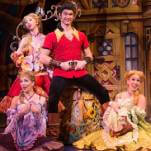
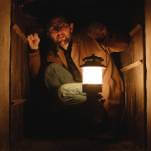





![Rob Reiner's son booked for murder amid homicide investigation [Updated]](https://img.pastemagazine.com/wp-content/avuploads/2025/12/15131025/MixCollage-15-Dec-2025-01-10-PM-9121.jpg)

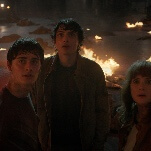



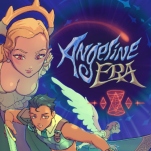



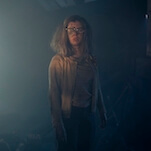


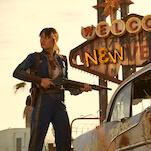


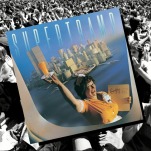




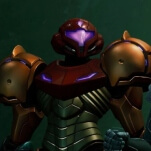
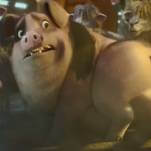
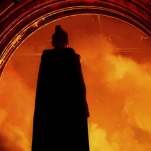


![HBO teases new Euphoria, Larry David, and much more in 2026 sizzle reel [Updated]](https://img.pastemagazine.com/wp-content/avuploads/2025/12/12100344/MixCollage-12-Dec-2025-09-56-AM-9137.jpg)




